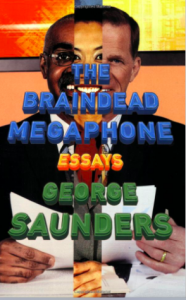“Freedom—that is what Lilly Linton wants most in life. Not marriage, not a brood of squalling brats, and certainly not love, thank you very much!
But freedom is a rare commodity in 19th-century London, where girls are expected to spend their lives sitting at home, fully occupied with looking pretty. Lilly is at her wits’ end—until a chance encounter with a dark, dangerous and powerful stranger changes her life forever…
Enter the world of Mr. Rikkard Ambrose, where the only rule is: Knowledge is power is time is money!”
This is the short detailed overview of the book Storm and Silence and within this review, I will discuss the amazing writing choices within the first few chapters of this historic masterpiece. A small bit of backstory to this book is that the author, Robert Thier, originally added this book to the well-known writing platform Wattpad, and although many people criticize Wattpad stories on this domain as cliché and poorly written, this book is clearly nothing of that nature. It is elaborately written and was acknowledged for it. The book was chosen to be published, and now is online as well as in stores for sale.
Now, onto the book itself. The storyline just as it was stated in the overview takes place in 19th-century London, and even though I know very little of London in the 19th-century, it was very easy for me to follow along with the storyline so far. The character traits that Mr. Thier gives to his characters, Lilly and Mr. Ambrose, is ironic and refreshingly clever. I am also not one to boast about writing that is written with accents nor with so much history, but this book has done a great job of providing these as well as keeping the reader engaged. The escalation of the storyline so far has been at a somewhat steady pace, and I can definitely tell that the characters each have there own bit of depth to them.
Not only do I want to just point out the progression of the story, but also the conflicts. One would presume that juggling so many conflicting social issues which are brought to light within the story would clash and cause the reader to become confused or overwhelmed, but somehow the book keeps every climax flowing accordingly. Lilly so far would have to go in my book of favorite characters alongside Mr.Ambrose because not only is she dealing with her constant need for freedom in a society that oppresses her, but also juggling the societies expectations of a lady, the issues within her family, and the responsibilities Mr. Ambrose brings along. Her quick wit and sly remarks are what keep her on top in this book, and so far I am loving it.
I encourage anyone looking for a switch up in their reading list to give Storm and Silence a look. I also encourage readers to indulge themselves in the mystery of if this book was named after the characters, which would you see as the description of the storm and which as silence; I guarantee your choice will never be set in stone.
